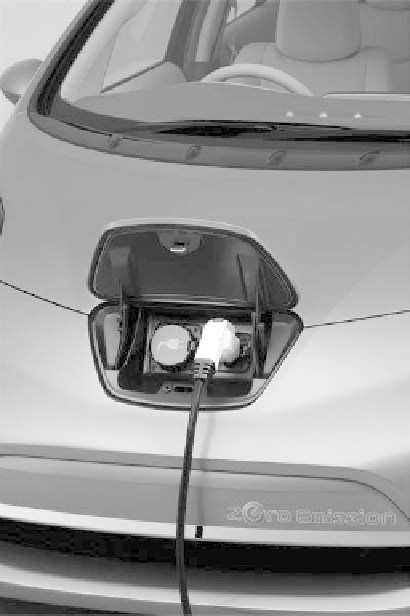Environmental Engineering Reference
In-Depth Information
Figure 2.5
If massive deployment is achieved, thousands of electric vehicles will
be plugged to the grid every day to satisfy transport needs (Courtesy
Nissan) [117]
employ [27]. Thus, assessing impacts of PHEVs connected to the distribution net-
work will require models that can emulate the technical features of PHEV loads.
Figure 2.5 depicts the Nissan Leaf being plugged to the grid via its conventional
home charger.
Modelling electrical storage is scarce in the literature since applications are
rather limited [21]. Nevertheless, usually for storage purposes electrical power is
converted into other forms of energy (
i.e.
potential or thermal) and later converted
once more into electrical power for final use [59]. Today with the imminent deploy-
ment of EVs, DNOs should look for ways to aggregate the storage capacity this
technology represents and use it accordingly to add greater flexibility in the provi-
sion of energy to consumers [26]. Since vehicles spend approximately 95% of their
lifetime parked and not in use [118], it is important to exploit the fact that PHEVs
have the potential to behave as flexible loads with considerable storage capacity when
idle and plugged [119]. Hence, if applied properly, the storage from aggregated
PHEV units can offer benefits in utility utilisation and ancillary services that arise in
the day-to-day operation of power systems [120]. The challenges and opportunities








Search WWH ::

Custom Search